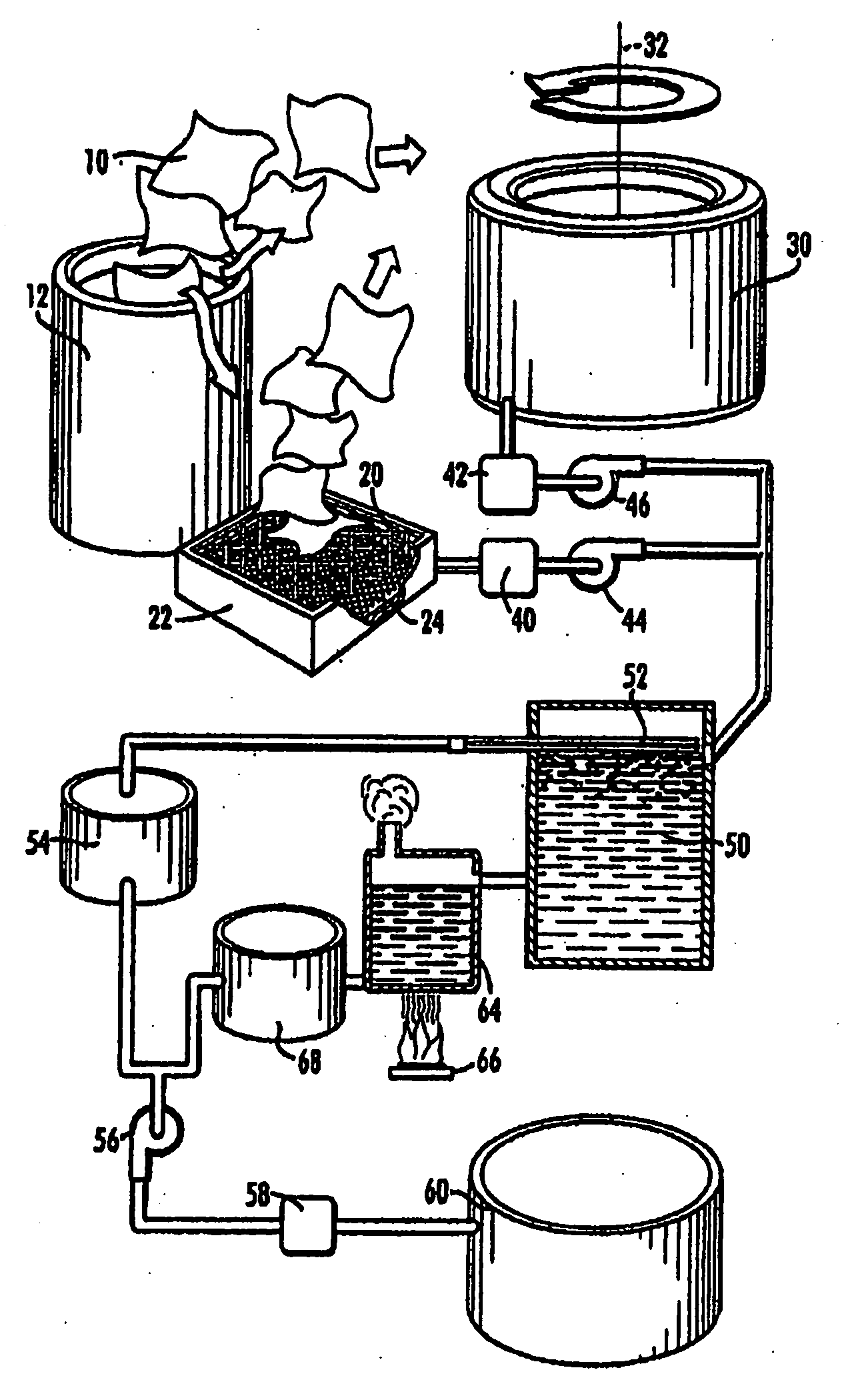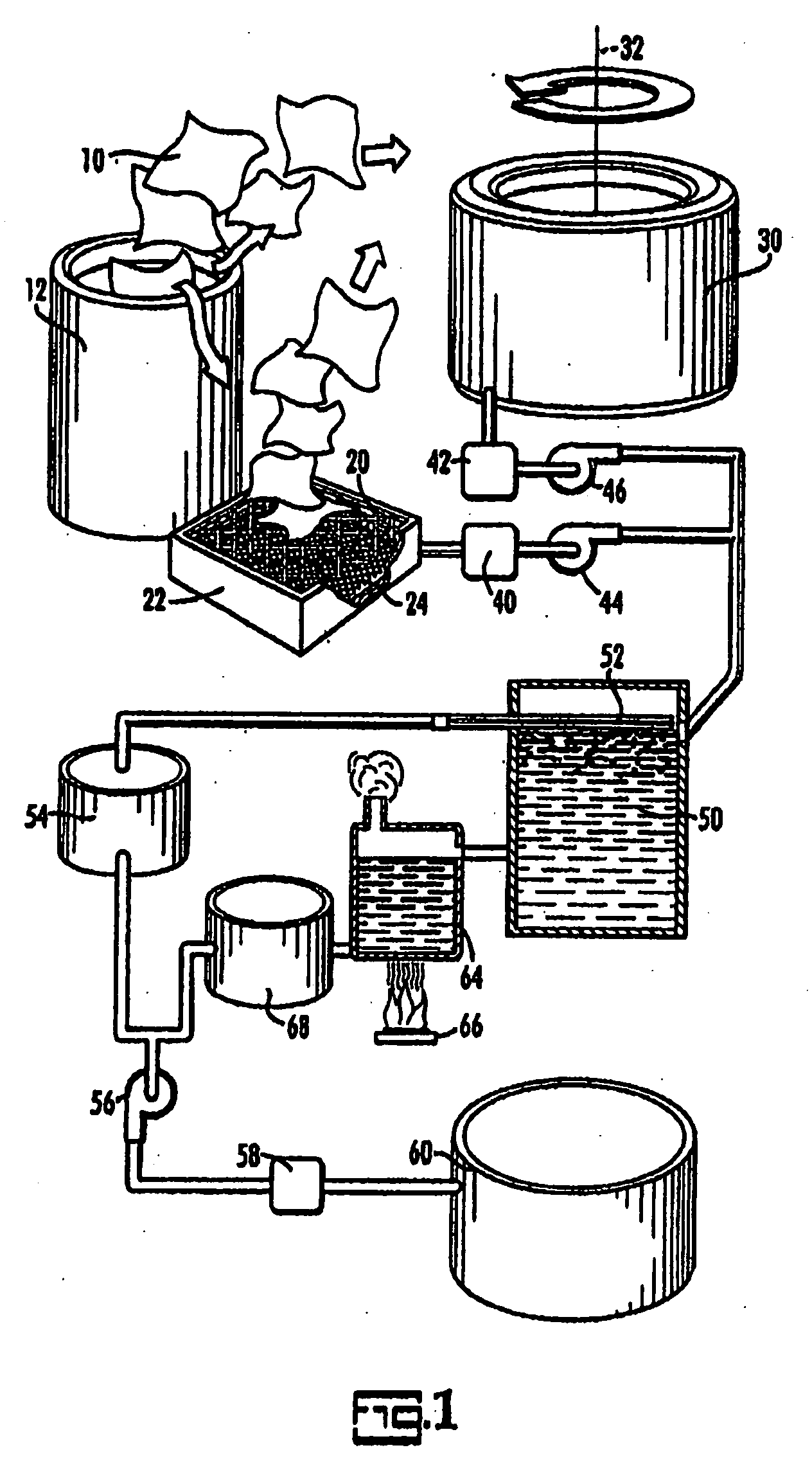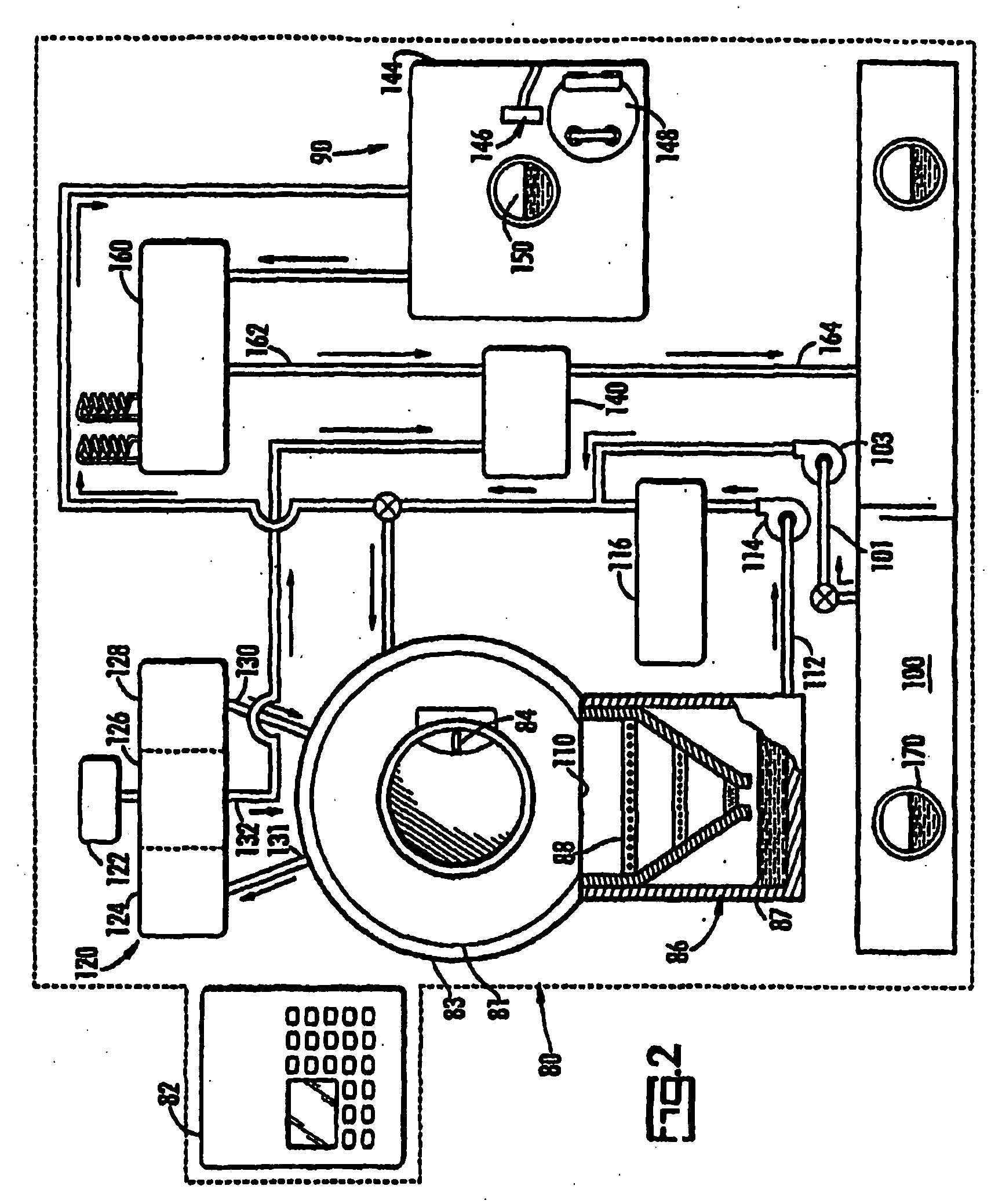Cleaning fluid and methods
a technology of cleaning fluid and cleaning method, applied in the field of cleaning fluid, can solve the problems of imposing significant handling requirements, unable to address the growing concern regarding typical dry cleaning fluid, and high cost of hazardous waste disposal, so as to facilitate the drying of cleaned materials, soften the feel, and smell fresh
- Summary
- Abstract
- Description
- Claims
- Application Information
AI Technical Summary
Benefits of technology
Problems solved by technology
Method used
Image
Examples
Embodiment Construction
[0029] Referring now to FIGS. 1-3 there are illustrated schematic diagrams and a flow chart of a method and apparatus for separating extraneous substances from fabrics according to the present invention. It is contemplated by the present invention that any type of fabric, be it woven, non-woven, natural, or synthetic, can be cleaned using the following method and apparatus. Furthermore, it is also contemplated that any type of extraneous substance that typically attaches to or becomes absorbed by fabrics can be removed or desorbed by the following method and apparatus.
[0030] A goal of the present invention is cleaning and recycling; in particular, the present system cleans fabrics for reuse and allows for recovery and recycling of extraneous substances depending on what these substances are. The more effective the present system is, the more extraneous substance it recovers, i.e. for recycling, and the cleaner the system gets the fabrics. Furthermore, no hazardous waste is generate...
PUM
| Property | Measurement | Unit |
|---|---|---|
| particle size | aaaaa | aaaaa |
| weight percent | aaaaa | aaaaa |
| weight percent | aaaaa | aaaaa |
Abstract
Description
Claims
Application Information
 Login to View More
Login to View More - R&D
- Intellectual Property
- Life Sciences
- Materials
- Tech Scout
- Unparalleled Data Quality
- Higher Quality Content
- 60% Fewer Hallucinations
Browse by: Latest US Patents, China's latest patents, Technical Efficacy Thesaurus, Application Domain, Technology Topic, Popular Technical Reports.
© 2025 PatSnap. All rights reserved.Legal|Privacy policy|Modern Slavery Act Transparency Statement|Sitemap|About US| Contact US: help@patsnap.com



